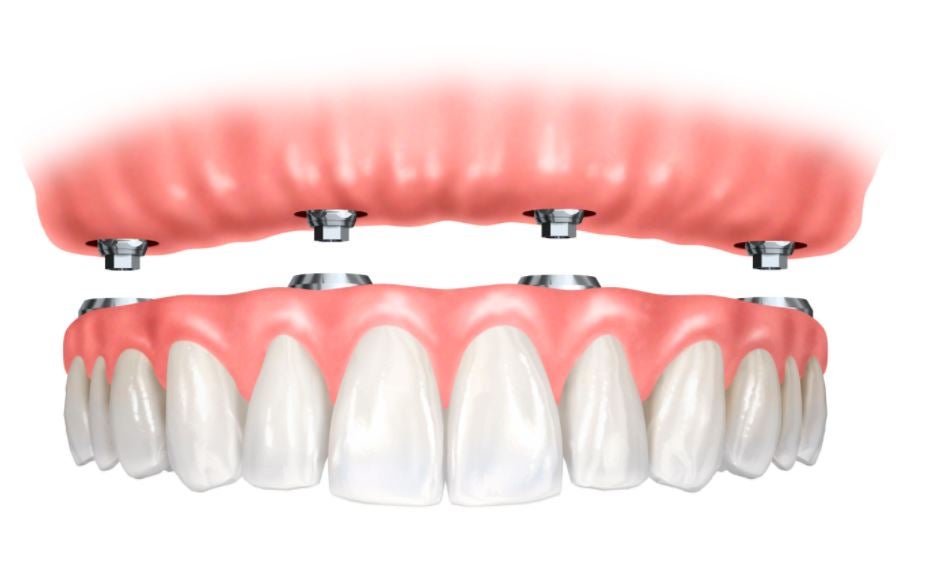The 7-Minute Rule for Dental Sense
Table of Contents9 Easy Facts About Dental Sense ExplainedThe 10-Second Trick For Dental SenseThe 9-Minute Rule for Dental SenseSome Known Details About Dental Sense
are medical devices surgically dental implanted into the jaw to restore an individual's ability to eat or their appearance. They provide assistance for synthetic (phony) teeth, such as crowns, bridges, or dentures. When a tooth is shed as a result of injury or illness, an individual can experience issues such as rapid bone loss, malfunctioning speech, or modifications to eating patterns that lead to discomfort.Dental implant systems include a dental implant body and oral implant abutment and may additionally include an abutment addiction screw. Dental implant vs bridge. The dental implant body is surgically put in the jawbone in location of the tooth's root. The dental implant abutment is usually connected to the dental implant body by the joint addiction screw and extends through periodontals right into the mouth to support the attached fabricated teeth
(https://share.evernote.com/note/12f780ae-8ad1-693d-87b6-b9c57ca5907c)Framework of The Dental Implant System selecting oral implants, talk to your dental copyright concerning the prospective advantages and risks, and whether you are a prospect for the treatment. Points to consider: Your general health and wellness is an essential variable in determining whether you are a great candidate for oral implants, how much time it will require to heal, and exactly how long the dental implant may remain in location.
Smoking cigarettes may influence the healing procedure and lower the lasting success of the dental implant. The healing procedure for the dental implant body may take numerous months or longer, during which time you commonly have a short-term joint instead of the tooth. the dental implant procedure: Thoroughly adhere to the oral health directions offered to you by your oral service provider.
Rumored Buzz on Dental Sense
Implant failure can cause the requirement for one more surgical procedure to deal with or change the implant system. Recovers the capability to eat Recovers cosmetic look Aids keep the jawbone from shrinking as a result of bone loss Protects the health of the bordering bone and gums Aids keep nearby (nearby) teeth stable Enhances quality of life Damages to bordering all-natural teeth throughout implant placement Injury to the surrounding tissues throughout surgical treatment, such as sinus perforation Injury throughout surgical procedure (for instance, fracture of bordering jawbone) Poor function, such as seeming like the teeth do not bite with each other usually A feeling that the tooth is loosened or linked here turning in location resulting from a joint screw loosening Implant body failure (looseness of the implant body) as a result of systemic infection, which might be most likely in individuals with unrestrained diabetes due to neighborhood infection in bone and gums sustaining the implant body as a result of delayed recovery, which might be more probable in clients who smoke Difficulty cleansing the gum tissues around the dental implant, causing bad oral health Neglected periodontal condition Post-surgical pins and needles due to nerve impingement or damages Always inform wellness care suppliers and imaging technicians that you have oral implants before any type of magnetic vibration imaging (MRI) or x-ray treatments.
FDA is not aware of any kind of damaging occasions reported for MRI or x-ray treatments with dental implants. Dental implants systems are typically constructed from products that adhere to international consensus requirements of the International Organization for Standardization (ISO) or ASTM International. These standards have details of what makes a safe material.

A dental implant is a framework that replaces a missing out on tooth. With screw-like devices, the specialist inserts an implant right into the jawbone, and it functions as an anchor for a man-made tooth, called a crown. A tool called a joint links the synthetic tooth to the dental implant. The crown is tailor-made to fit the individual's mouth and match the color of their teeth.
Dental Sense Can Be Fun For Everyone
Some individuals are not eligible for dental implant surgery. It is for oral doctors to operate on individuals with: acute illnessuncontrollable metabolic diseasebone or soft tissue illness or infectionIf these problems are dealt with, a person can have the surgical procedure. In, dental surgeons avoid operating individuals with: If individuals with any of the above undergo dental implant surgery, there is a higher danger of the dental implant stopping working.

Oral dental implant surgical treatment is a tailored procedure. Give you time to recover. Attach the blog post and final crown, bridge or denture.
Next, your specialist will thoroughly put the oral implant into your jaw. If your dental implant is near the front of your mouth, your dental expert will certainly make a temporary tooth for you to wear up until you heal.
Dental Sense Fundamentals Explained
Your copyright can tell you what to expect in your situation. During the recovery phase, your jawbone needs to fuse to the oral implant. This process, called osseointegration, is crucial for security and long-term success. This procedure can take anywhere from 3 to nine months. In many cases, it may take much longer.
When your dental implant heals, your dental professional can affix the abutment (little connector article) and your final remediation (crown, bridge or denture). This typically takes concerning one hour to finish and might call for a second small surgical procedure. You shouldn't feel any kind of pain throughout your dental implant procedure since your supplier will utilize medication to numb your gums.